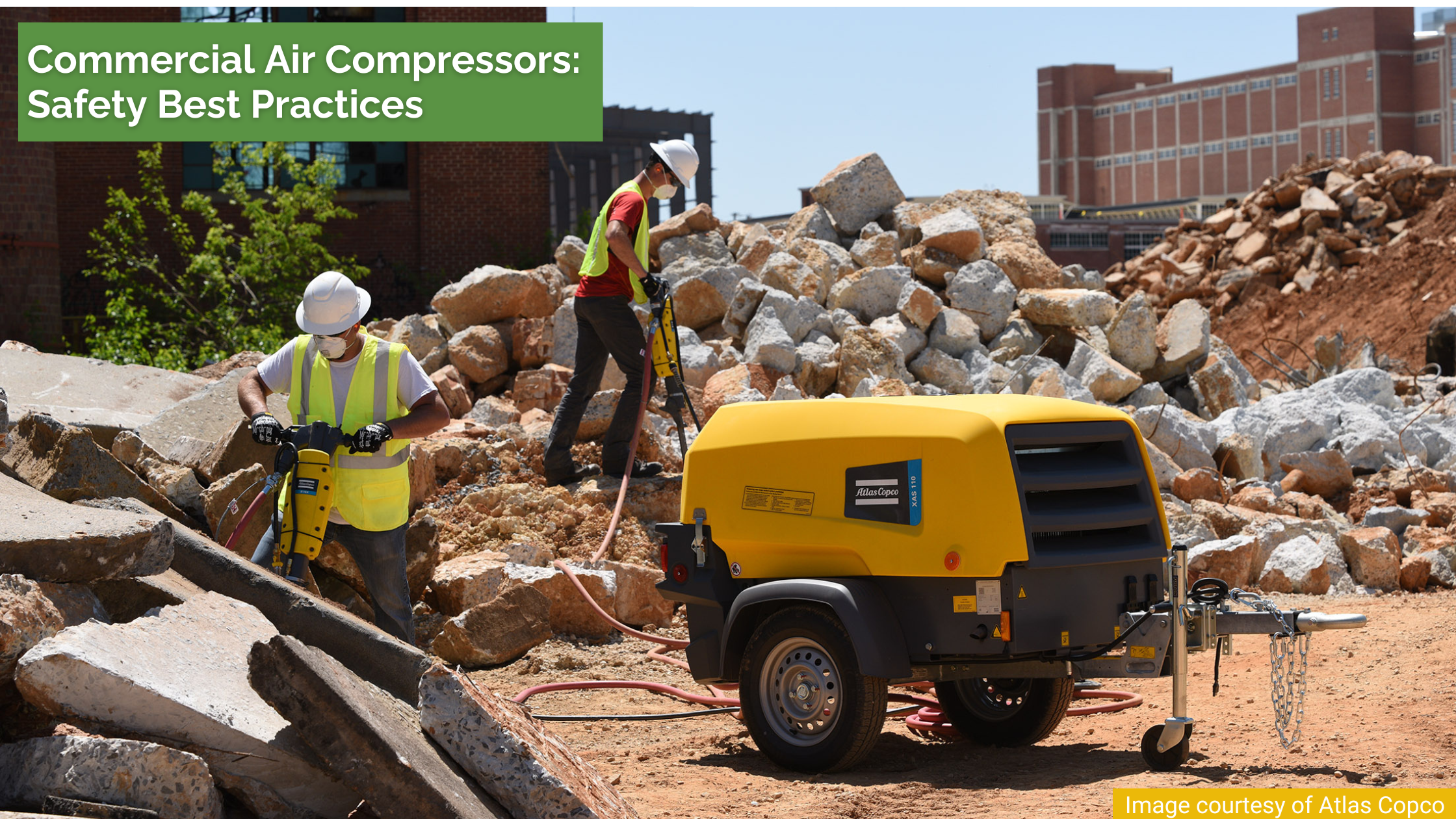
April 04, 2025
Portable Commercial Air Compressors: Safety Best Practices
With portable commercial air compressors delivering air at a pressure of at least 100 pounds per square inch (PSI= force exerted per square inch of an area) there can be real dangers when using this common piece of equipment. For instance, car tire PSI is usually between 28 and 36, but the aftermath of a blow out is still remarkable. Imagine an accident involving pressure three times that of a car tire.
To avoid injury, to workers, equipment and even the project’s bottom line, here are commercial air compressor safety best practices.
Portable Commercial Air Compressors, Safety Do’s:
To work with and safely operate, while in compliance with regulations, always:
- Wear hearing protection when exposed to excessive noise, as it can cause permanent hearing damage. Install noise-reducing mufflers on machines to minimize this health risk.
- Make sure the open end of a hose or air line is securely held when blowing compressed air. A free end can whip, causing an injury. Open the supply air valve carefully, and ensure ejected particles are restrained. A blocked hose can act as a dangerous compressed air gun.
- Use only heavy-duty clamps, fittings, and the correct type and size of hose end fittings and connectors designed for the particular air compressors being used.
- Shut off valves and bleed down pressure before making any hose connections.
- Store hoses properly, away from heat sources and direct sunlight. Use hose reels to reduce risk of injury and extend hose life.
- Personnel on site should familiarize themselves with and adhere to the specific compressed air regulations for that work site.
- For hoses exceeding ½ inch ID, install a safety device at the supply or branch line to reduce pressure in case of hose failure, as required by OSHA.
- Isolating valves must be lockable in the “off” position to prevent accidental air pressure application while working on the machine.
- Check to make sure that the towing systems (vehicle and connections) and lifting devices (cranes, forklifts, slings) are rated for the Gross Vehicle Weight Rating (GVWR).
- Always follow the safety, maintenance, and operational instructions provided in the machine’s instruction booklet.
Alternately, there are several things never to do when working with a commercial air compressor.
Portable Commercial Air Compressors, Safety Don’ts
For proper handling and safety when using compressed air systems never-
- Use air directly from a compressor for breathing purposes. There are systems specifically designed for such purpose with suitable breathing air filters and regulators in place, but those aren’t used in construction projects.
- Apply compressed air to the skin or direct it at a person – even air at a pressure of 15 PSIG (gauge pressure, which includes atmospheric pressure) can cause serious injury.
- Use a compressed air hose to clean dirt or dust from clothing, shoes, hands, feet or any other body part.
- Crimp, couple, or uncouple a pressurized hose.
- Alter or install an A.S.M.E. safety relief valve that has a higher PSIG rating than the pressure vessel rating to which it is installed.
Commercial air compressors are a common, and necessary, piece of equipment on many projects. With correct, and safe, use a good commercial air compressor will help the team get the job done.
Portable Commercial air compressors for rent or purchase in the Mid-Atlantic
FieldForce provides engineering services and equipment for construction, dewatering and water management projects in the municipal, manufacturing, and industrial sectors. Our inventory includes Atlas Copco air compressors, pumps and generators for rent or purchase, and temporary piping, filtration equipment, and light plants available to rent. We maintain our fleet at yards in the greater Pittsburgh area, West Virginia, and central Pennsylvania for convenient availability.
With an experienced, skilled, workforce and a full range of equipment to rent, FieldForce has the expertise, knowledge, and the assets to serve water management needs that support heavy civil projects across the Mid-Atlantic region. Contact us today for details.

